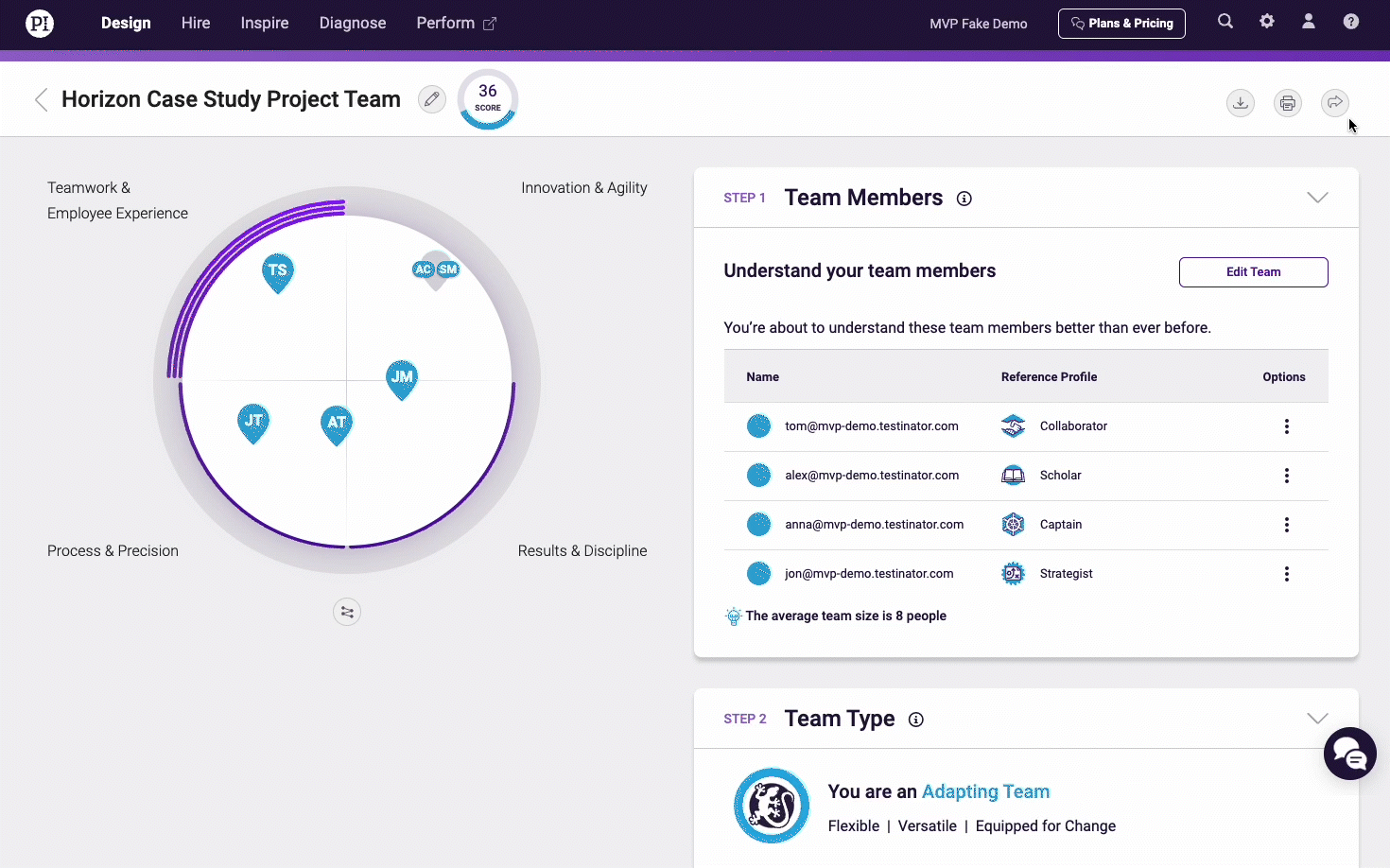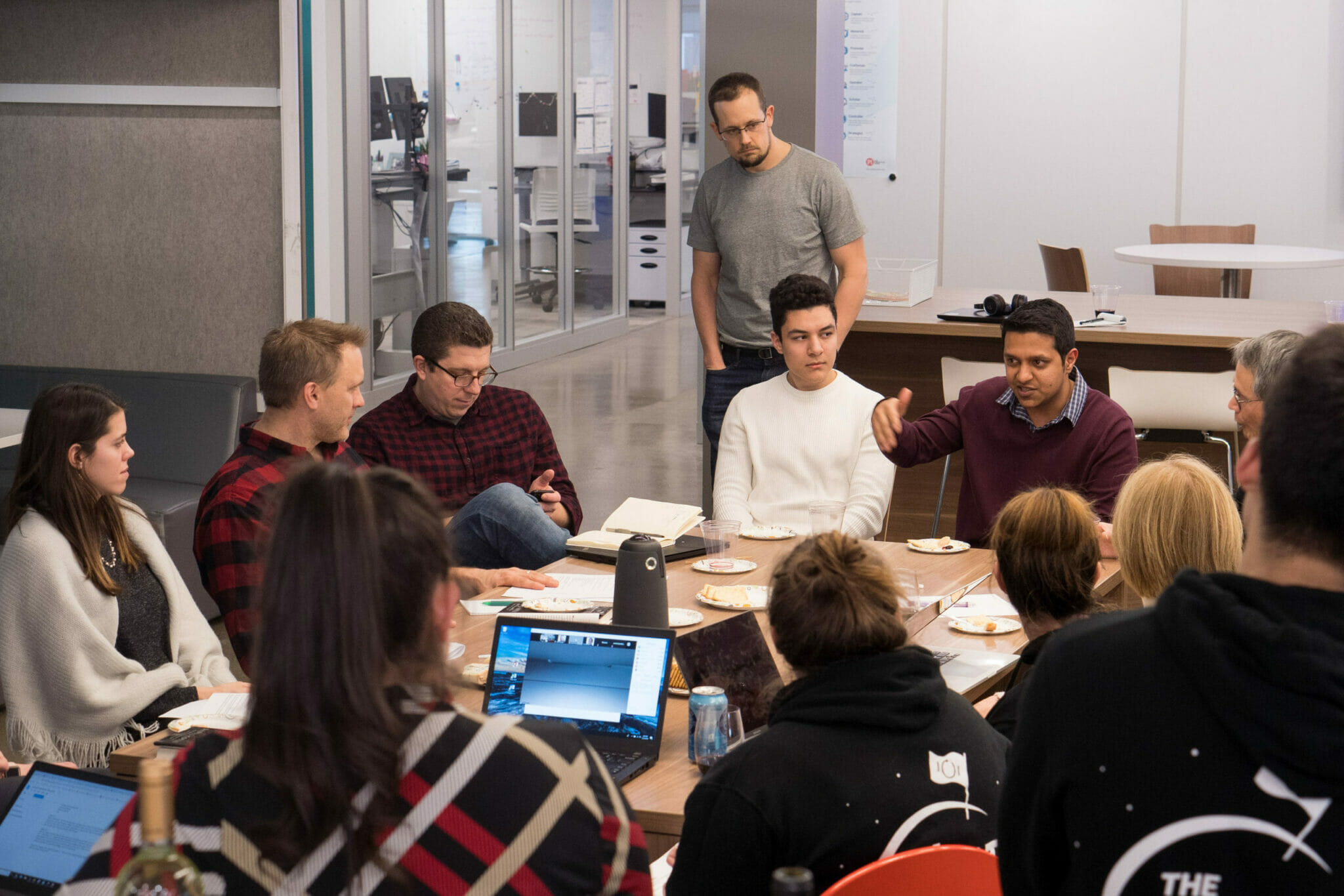Consider the concept of the “born leader.” What if we told you it was the exception, rather than the rule?
While it may be true that some people are more naturally inclined to lead, whether out of their disposition or their circumstances, the majority of leaders got to where they are by learning on the job. And that’s good news. It means becoming a good leader largely comes down to identifying what an effective leadership style looks like, then taking those characteristics on.
A personalized leadership approach for each team member.
PI’s behavioral insights help leaders inspire and coach each employee in a way they truly connect with.
So let’s look at what separates good leaders from the merely adequate, then break down the leadership qualities you need to hone.
The importance of effective leadership
Think of effective leadership as the glue that holds all the parts of an organization together. The stronger it is, the more efficiently everyone can communicate, collaborate, and move together toward a common goal. That’s because leadership is something that touches absolutely every aspect of the company.
Good leaders keep productivity high, workers satisfied, and resources abundant. They help establish a positive company culture and resolve conflicts. They are responsible for making sure the organization remains innovative, flexible and resilient. By many important measures – such as employee retention, engagement, and performance – strong leadership is the single most important determining factor.
Here are some specific ways effective leaders exert their influence:
- They keep everyone driven. The best leaders understand how important it is to communicate a compelling vision and mission to their employees. They also know how to keep the company inspired and morale high, even when faced with unexpected challenges.
- They think strategically. The future of the company is never far from a good leader’s mind. They are constantly keeping the big picture in place for their employees as they help them make the best decisions for the long-term health of the company.
- They empower individuals. Effective leadership also means looking beyond company goals and considering the needs and aspirations of individuals. This means offering opportunities for learning and growth, providing empathy and support, and challenging employees to achieve even more.
- They provide stability. During times of crisis, strong leadership plays an essential role by making strategic decisions that help steer the company back toward success. They also know how to remain composed in order to provide employees with a sense of reassurance.
- They include everyone. Good leaders value the voices of everyone at the company. They put in place policies that promote diversity and equity, and go out of their way to make sure every aspect of the company is as inclusive as possible.
The characteristics of a good leader
The specifics that make up good leadership are bound to differ from company to company, or even from team to team. That said, all leaders will still rely on a general foundation of qualities to manage their team and drive them toward success. The following leadership skills are some of the most important.
Accountable
If good leadership starts anywhere, it’s with building trust. Without this foundation, employees won’t have any incentive to follow your directions. They need to know you’ll follow through on your word, justify your decisions, and remain responsible for your actions.
In other words, you need to show accountability. The best way to do this is to demonstrate yourself what you want to see from your employees. If you set high expectations for them, show them how to meet this standard by working alongside them at every step. Show support as well by making sure your communication is clear, your employees have access to the tools and resources they need, and everyone is empowered to make their own decisions. This will help build credibility, contributing to a more positive and productive work culture.
Visionary
A leader shouldn’t just maintain operations and keep the ship afloat. They should be actually leading the organization somewhere. And that requires having a firm vision for where they want to go.
But the best leaders know that this vision shouldn’t come from only them. Instead, building a sustainable, effective, and long-lasting vision for the organization is something that should involve everyone. You can do this by reaching out to employees and listening to their ideas about where the company should go. From there, you should incorporate their input into an inspiring vision you can directly tie to the larger mission or goal of the organization. After this, all that’s left is to start breaking it down into a series of manageable and understandable steps that everyone can follow.
Decisive
Being a decisive leader doesn’t just mean you make decisions. Anyone can do that. What it really means is knowing how to make quick, informed, and well-thought-out decisions at the moments it really counts.
In order to pull this off regularly, you’ll need to build a framework you can use to sort through information and find what you need, as well as a method for weighing competing opinions against each other. In order to help you out, it can be a good idea to keep close track of any important metrics or other data that might inform your choices. When a decision must be made, you don’t want to be just starting to understand its context. Similarly, you should also know how to consider different possible outcomes against the larger goals of the organization. Knowing how to do this on the fly will help prevent bottlenecks from turning into more serious problems later on.

Innovative
Good leaders won’t allow their organization to become stagnant. Instead, faced with the rapid pace of business and the continuous threat of competition, they’ll know how to build a culture that encourages creativity and innovation.
A great place to start with this is by establishing an open work environment where everyone is encouraged to share ideas. You could do this by regularly asking your employees, regardless of where they sit in the organization, to contribute their thoughts, as well as by making collaboration between both individuals and teams a fundamental part of your office. You want people to encounter new ideas and perspectives, rather than the same voices they’ve heard before. While you’re at it, encourage continuous experimentation by making it clear that failure is an opportunity for growth, rather than something to be afraid of. This will push teams to test out new ideas, then keep iterating and refining their approaches as they learn.
Communicative
Good leaders don’t just give out directions. They create an open dialogue with their employees that makes it easier for them to clearly answer their questions, articulate their expectations, address their needs, give them necessary instructions, and offer useful and effective feedback.
It can take some practice learning how to do all this right, but you can give yourself a head start by setting up open communication channels for your employees. Make it clear that they can come to you with questions or comments anytime they like. Or, if that doesn’t do the trick, set up open office hours to encourage people to come to you. During any conversations you have, make sure to use active listening to fully engage with and hear the person you’re speaking with. Then, when it’s your turn to talk, keep your comments short and to the point. By avoiding unnecessary information, showing empathy, and opening your doors to employees, you‘ll be much more likely to make yourself heard.
Adaptable
Every leader should expect change. The scope of their project might shrink, or they may suddenly find themselves with far fewer resources than they had counted on. But through it all, strong leaders will be able to quickly recognize the need for change, then implement the necessary adjustments. They’ll know how to adapt.
Learning how to become a more adaptive and flexible leader will require a great detail of situational awareness. It will help if you get in the habit of staying up to date with any industry trends, technological advancements, or any other factors that may affect your company. This way, you’ll be better prepared when the time for change comes. You should also try to keep an agile mindset. Don’t consider any decisions or actions set in stone. Instead, always be willing to go back and reassess in light of new information or circumstances. Encourage other employees to do the same so that your entire organization can stay as flexible as you.
Empathetic
It’s important for leaders to set goals for their organization, but it’s just as important for them to remember to check in with the people working hard to accomplish these goals. That means knowing how to deal with their moods and emotions. It means being empathetic.
Of all the soft skills a leader can cultivate, emotional intelligence may be the most important. That’s because it’s connected to so much else. When you show you care about your team members as people, not just workers, you’ll be better able to cultivate trust, communicate with them more clearly, and inspire them to do better work. Start out by practicing empathy in everyday situations. For example, you could use your active listening skills to make sure you are giving someone the space and attention to fully express themselves. You could also try imagining how a situation might feel from someone else’s perspective. If you want, you could even take it a step further and offer to try out their task or job for the day. Not only will this be a great way to express interest, it will likely expand your own self-awareness as well – and that’s essential for becoming a better leader.








